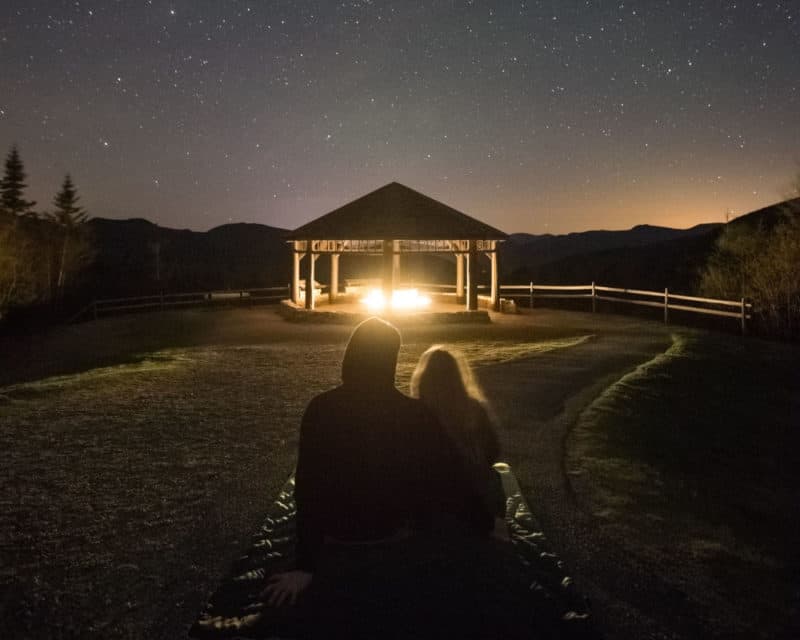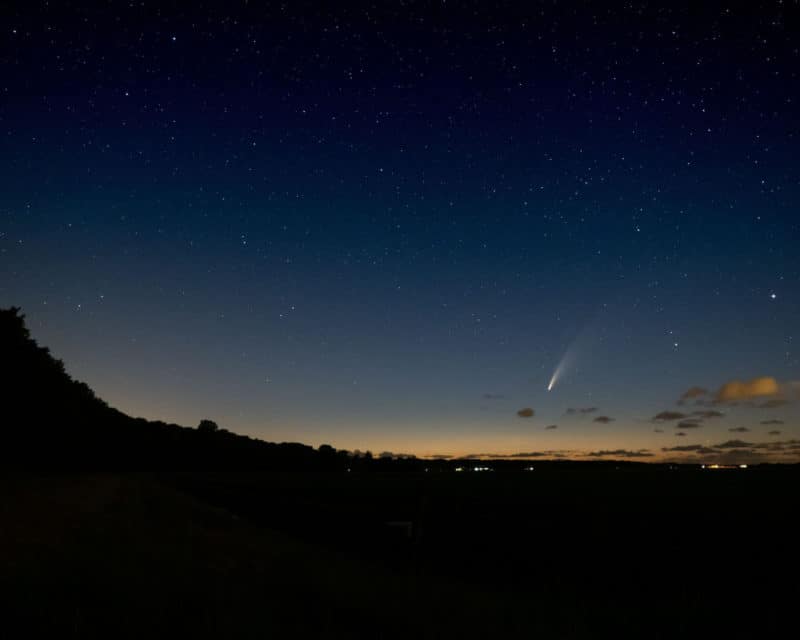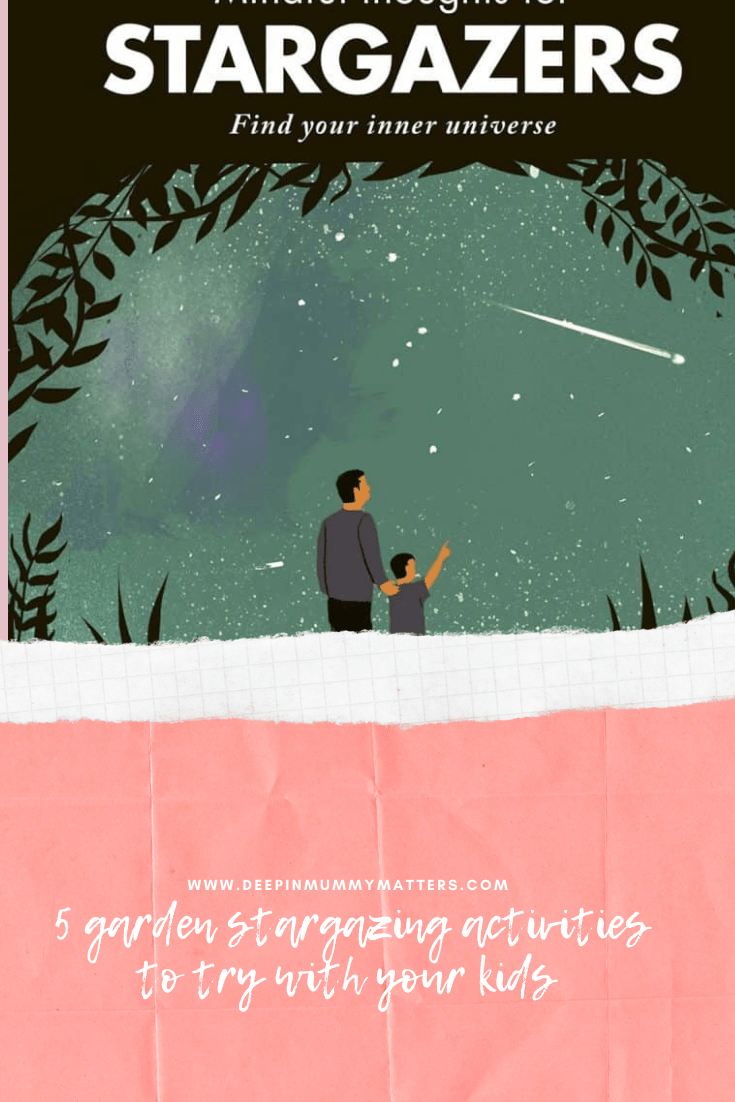Mark Westmoquette, Astrophysicist and Zen Teacher gives his 5 garden stargazing activities to try with kids – based on his stargazing books Mindful Thoughts for Stargazers, Stars, and The Mindful Universe.
Kids are often fascinated by the night sky. But as adults, we sometimes feel worried about guiding them because we think our knowledge of the stars isn’t up to speed, or we can’t remember any of our GCSE physics that might’ve helped explain what’s up there. But actually, you don’t need to have a star map or telescope or know anything about the constellations to enjoy stargazing activities. There’s magic in just looking up at the night sky with your naked eyes and immersing yourself in the wonder of what you see.

So one night, when it’s reasonably clear, get your kids together and find a place where you can see the sky – may be just the back garden, maybe a nearby field away from the streetlights, or maybe while you’re on holiday camping. Prepare a flask of hot chocolate, then wrap up warm, lay down a blanket on the grass (or you could stuff your paddling pool with a duvet and pillows), then look up together and notice what you see.
If you need a torch, use a red one. This is because red light doesn’t affect your night vision as much as white light does. If you don’t have one, you can easily make one yourself (and while you’re at it, make a few – I’m sure every kid in your group will want their own!).
Activity 1 – Simple stargazing
Turn off as many lamps or lights as you can and give your eyes time to adjust to the dark. This can take up to 15 minutes. Notice how more and more stars seem to appear out of the darkness as your eyes adapt.
Give your kids plenty of time to look with curiosity and without guidance. Follow their lead. Don’t feel like you have to be an expert or explain anything. Let them ask questions and be comfortable if you don’t know the answers. Just say, “I don’t know”. Encourage them to look up with inquisitiveness and interest and enjoy wondering about the night sky together.
In the daytime, our atmosphere is lit up by the sun, which outshines the stars completely. But at night, the atmosphere becomes a transparent window through which we can see into outer space. How does it feel to be seeing into outer space? How does it feel to be standing (or lying) on a ball of rock we call the Earth, orbiting the Sun, in the outer reaches of our galaxy, looking out at all the neighbouring stars?
If the clouds begin to roll in, it’s okay. Perhaps your kids get distracted or aren’t interested at this moment. Don’t worry. Just notice those slight prickles of irritation that they’re not doing what you’d planned. Let your kids (and the night sky) be the way they are. If it seems appropriate, try engaging them with one of these next activities.
Activity 2 – Stargazing diary

You might want to ask them to start a stargazing diary. Ask them to draw what they see, including any constellations they can spot and which way up they are, and record how they feel as they look up (cold/warm, excited/boring, etc.). They could also note down any questions to look up later.
If the moon is visible, you could explain how it waxes and wanes each month (with the help of this video), and they could record its phase and location in the sky.
Activity 3 – Spot a shooting star
Shooting stars are always unexpected and totally unpredictable, but there’s more chance of spotting one around the nights of a known meteor shower (especially when it’s dark with no moon).
A shooting star, or meteor, is created by a meteoroid (a small rocky fragment of a comet or asteroid) searing through the Earth’s atmosphere and burning up. The best way of catching one is to look up with wide-eyed attention and wait. Most of the time, they’re swift, but just occasionally, they streak right across the sky, leaving a visible smoke trail.
Spotting a shooting star is one of the most magical stargazing experiences we can have. If you see one, notice that little feeling of thrill and wonder that shivers through your body. And don’t forget to make a wish…
Activity 4 – Make up your own constellations
Although it may seem like it, each star isn’t just a pinhole in a giant screen – they are vast orbs of gas, all at very different distances. The patterns of stars we see here on Earth (the constellations) only seem that way from our vantage point. Go to a different part of the galaxy, and the patterns would appear differently.
So imagine you’re all lying on the surface of planet Krypton and start making up your own constellations (after all, that’s what ancient skywatchers did long ago here). What would you call them? Try coming up with some imaginative stories or Kryptonite myths to go with these new constellations. Have a good laugh coming up with some outlandish stories!
Activity 5 – Night sounds

As you all lie in the dark, tune into what you hear. You might all want to close your eyes for this one.
At first, you might notice some human-made sounds, perhaps coming from inside the house or from cars on the road, perhaps the sound of an aeroplane. Maybe there’s a light breeze, or maybe there’s a gusty flow of air around you. How does that sound? What else can you hear?
Do the stars make a sound?

We’d love to hear how you get on stargazing with your kids and if these activities connected with them. Leave a comment below.
Mark Westmoquette is an Astrophysicist, Zen Teacher and the author of Mindful Thoughts for Stargazers, Stars, and The Mindful Universe. See more at markwestmoquette.co.uk

